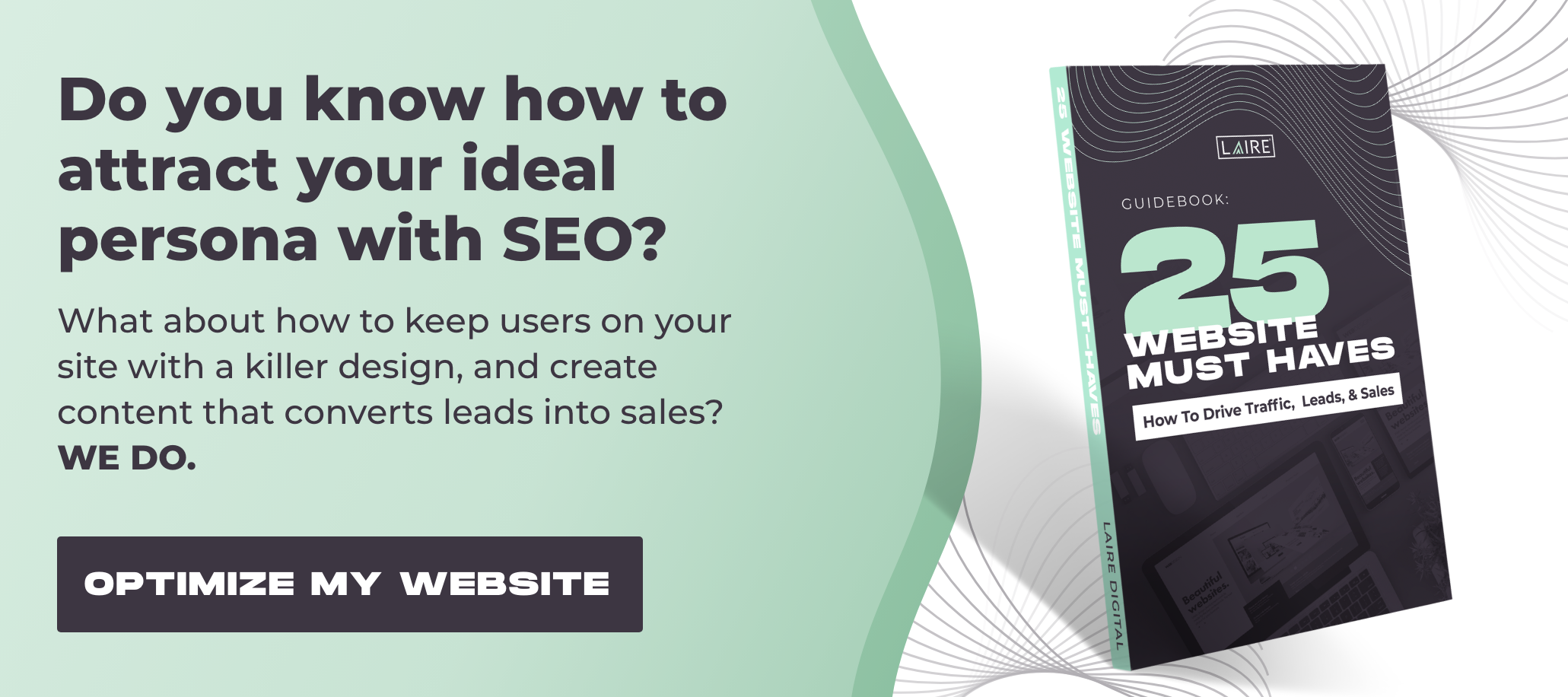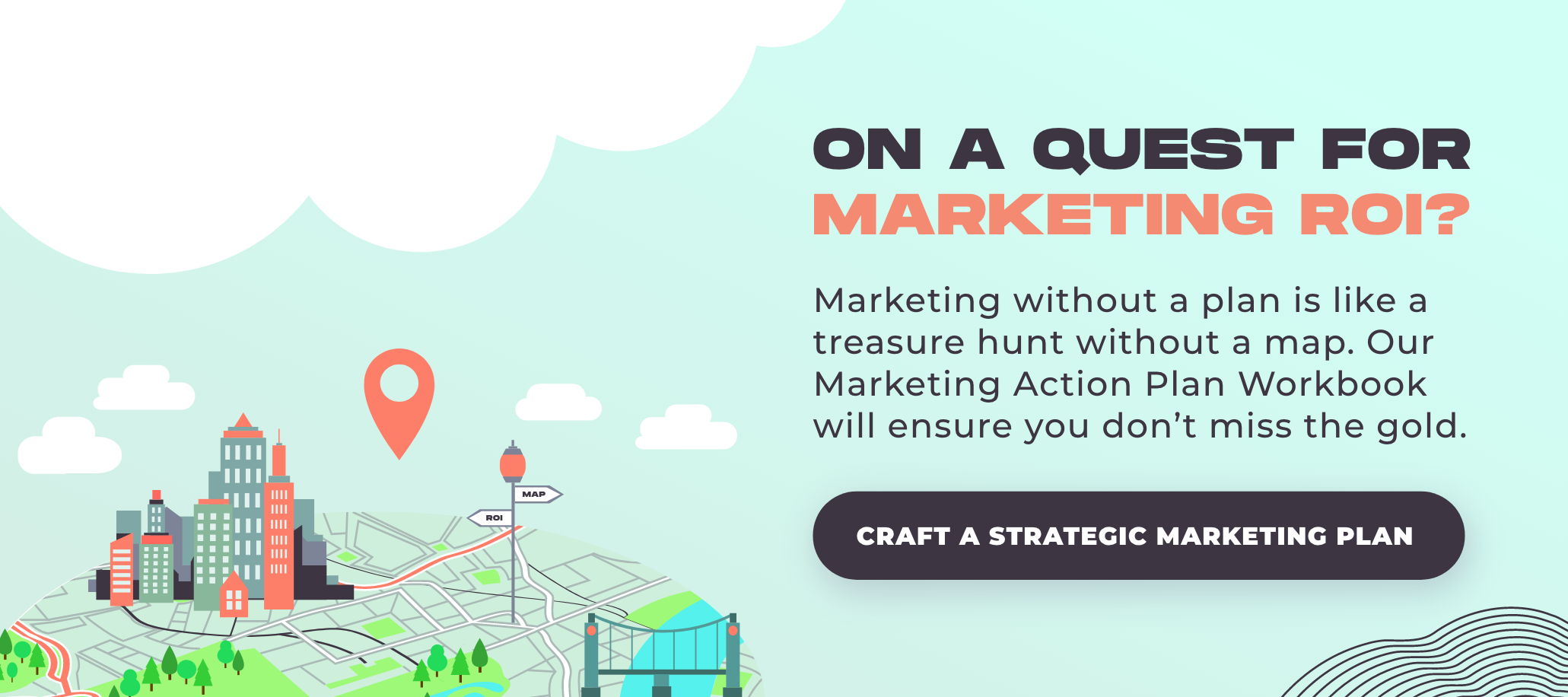TABLE OF CONTENTS
Define Your Goals | Understand Your Audience | Research Your Market | Choose the Right Channels | Develop Your Messaging | Optimize Your Website | Pitfalls to Avoid
In 2025 and beyond, even the best software-as-a-service (SaaS) products need more than innovation to succeed — they need powerful marketing.
With complex offerings, long sales cycles, and constantly shifting trends, tech companies face unique challenges that make building an effective marketing strategy anything but simple.
In this blog, we’ll break down how to create a scalable, results-driven marketing strategy designed specifically for tech companies, whether you’re just launching or scaling an enterprise. Let's walk through how to do it, step by step.
1. Define Business Goals and Align With Marketing Objectives
Every successful marketing strategy starts with a solid foundation. Begin by anchoring your efforts in the company’s near-term vision and identifying key performance indicators (KPIs) that will guide progress. Some valuable KPIs to track include:
- Revenue growth
- Customer acquisition
- Retention rates
- ARR/MRR (Annual and Monthly Recurring Revenue)
Once you've defined your KPIs, reverse-engineer them into specific, measurable marketing goals, whether that’s hitting lead generation targets, boosting conversion rates, or increasing qualified traffic. Staying focused on these metrics ensures you can accurately track momentum and adjust as needed over time.
Equally important is cross-departmental alignment. Collaborate with teams across sales, product, and customer success to make sure your marketing goals support broader business objectives.
While some departments may already share benchmarks — like sales and customer success — those metrics might need to be refined to stay in sync with evolving product priorities.
2. Understand Your Audience and Build Buyer Personas
Understanding your audience is the cornerstone of effective marketing. If you don’t know who you’re selling to, you can’t expect your message to land or convert.
Start by identifying the key decision-makers who drive purchasing decisions, as well as the influencers around them. In tech, this might include CTOs, senior leadership, developers, end users, or operations staff, each with unique perspectives and priorities.
Next, map out the typical buyer journey: Awareness → Consideration → Decision → Post-purchase. This framework helps shape what information your buyer personas should include, so your marketing speaks directly to the people most likely to engage and convert.
Your personas can be simple or detailed, but they should always include core components like:
- Pain Points: The challenges your product helps solve
- Goals: What success looks like for your buyer
- Preferred Channels: Where they consume information (email, social, events, etc.)
- Technical Knowledge: Their level of expertise to ensure your messaging is clear and relevant

With well-developed personas in place, you’ll have a clear blueprint for crafting messaging that resonates and a stronger foundation for your marketing strategy to build on.
3. Conduct Market, Competitor, and Positioning Analysis
A smart first step in building your strategy is to analyze what’s already working in your industry. Look at successful competitors or leaders in the space. What are they doing well? Where do you see gaps or unmet needs that your brand could fill?
One effective way to evaluate your position is by conducting a SWOT analysis (Strengths, Weaknesses, Opportunities, and Threats). This helps you clearly identify where you stand in the competitive landscape and where your greatest opportunities lie.
Once you understand the market and your competitors, it’s time to define your Unique Value Proposition (UVP) or your “remarkables” — the thing that sets your product apart.
Identify your key differentiators and make them the foundation of your marketing strategy. The clearer your UVP, the more confidently you can carve out a niche and speak directly to your ideal audience.
4. Choose Your Marketing Channels Wisely
Remember those preferred channels from your buyer personas? They’re a critical part of your marketing strategy. Now’s the time to decide how your audience will discover your product.
Inbound marketing is a powerful approach that attracts potential buyers to your site through valuable content. Mastering search engine optimization (SEO) — and, now, AI visibility optimization (AIVO) — is essential here. Think high-quality blogs, downloads, videos, and case studies that educate, engage, and convert.
Many tech companies also layer in outbound marketing, using cold outreach, paid ads on platforms like Google and LinkedIn (or even Reddit), and highly targeted campaigns that reach buyers where they already are.
Performance marketing can amplify both inbound and outbound strategies, using pay-per-click (PPC), affiliate, and referral programs to drive measurable results.
Don’t overlook the power of strategic partnerships, either. Collaborating with complementary tech solutions can expand your reach and create mutual value. After all, rising tides lift all ships.
Finally, events and webinars are excellent tools to showcase your unique value proposition in a more interactive way. These formats allow potential buyers to engage with your product, ask questions, and better understand how it solves their specific challenges.
5. Develop Your Messaging and Content Strategy
Now it’s time to dial in your messaging and content strategy. Start by revisiting your buyer personas. Who are you speaking to, and where are they in the funnel? Are they just discovering your product, actively comparing solutions, or ready to make a decision?
Next, choose the content formats that resonate. Tech companies often see great results with explainer videos, product walkthroughs, comparison guides, and customer success stories, all of which help build trust and clarity around your offering.
The key to success? Consistency. Develop a strong brand voice, identify your most compelling proof points, and ensure both stay consistent across every platform and piece of content.
6. Build and Optimize Your Website for Conversion
When done right, your website can be your most powerful marketing tool.
For tech brands, a seamless, responsive user experience is non-negotiable. Make it effortless for buyers to find what they need and take the next step. Prioritize clear calls to action (CTAs) like the one below, and use tools like heatmaps, A/B testing, and social proof to continually refine performance.
Customer relationship management (CRM) platforms like HubSpot and Salesforce offer valuable dashboards and automation capabilities — think lead scoring, audience segmentation, and nurture sequences — that streamline your strategy and offer deep insight into what’s working.
Then? Test, learn, and iterate until your site consistently drives the results you want.
Common SaaS Marketing Pitfalls to Avoid
Even the strongest marketing strategy can falter if you’re not careful. Avoid these common pitfalls that trip up even the best teams.
Neglecting Post-Sale Engagement
Many companies focus all their efforts on acquisition and forget about retention. But satisfied customers are your best source of referrals, renewals, and long-term revenue. Keep the conversation going after the sale.
Spreading Efforts Too Thin
Trying to be everywhere at once usually means you’re not doing any one channel well. Instead, focus on a few high-impact channels where your audience is most active — and do them exceptionally.
Misalignment Across Teams
When marketing and sales teams aren’t aligned, messaging becomes inconsistent, and momentum stalls. Regular collaboration and shared goals are essential to keep strategy and execution on track.

At the end of the day, clarity wins. Stick to your strengths, keep your messaging simple, and don’t underestimate the power of a focused, well-aligned strategy.
Ready to Grow? Let LAIRE Lead the Way
The most successful SaaS marketing strategies are built on a foundation of clear goals, a deep understanding of your audience, sharp messaging, and a smart mix of channels, constantly refined through testing and optimization.
You don’t have to get everything perfect from day one. Start focused, stay agile, and scale as you learn what works.
If building a marketing strategy on your own feels overwhelming, we’re here to help. The Marketing Action Plan (MAP) by LAIRE® is designed to transform complexity into clear, manageable actions that drive real results.
Whether you want to work through our free workbook at your own pace or prefer to hand the entire process over to our expert team, we tailor our approach to fit your needs. With LAIRE by your side, you’ll gain confidence, clarity, and a strategy that’s built to grow your tech business effectively and sustainably.
Ready to elevate your tech marketing? Download the free MAP Workbook or connect with our team, and let’s build something extraordinary together.



